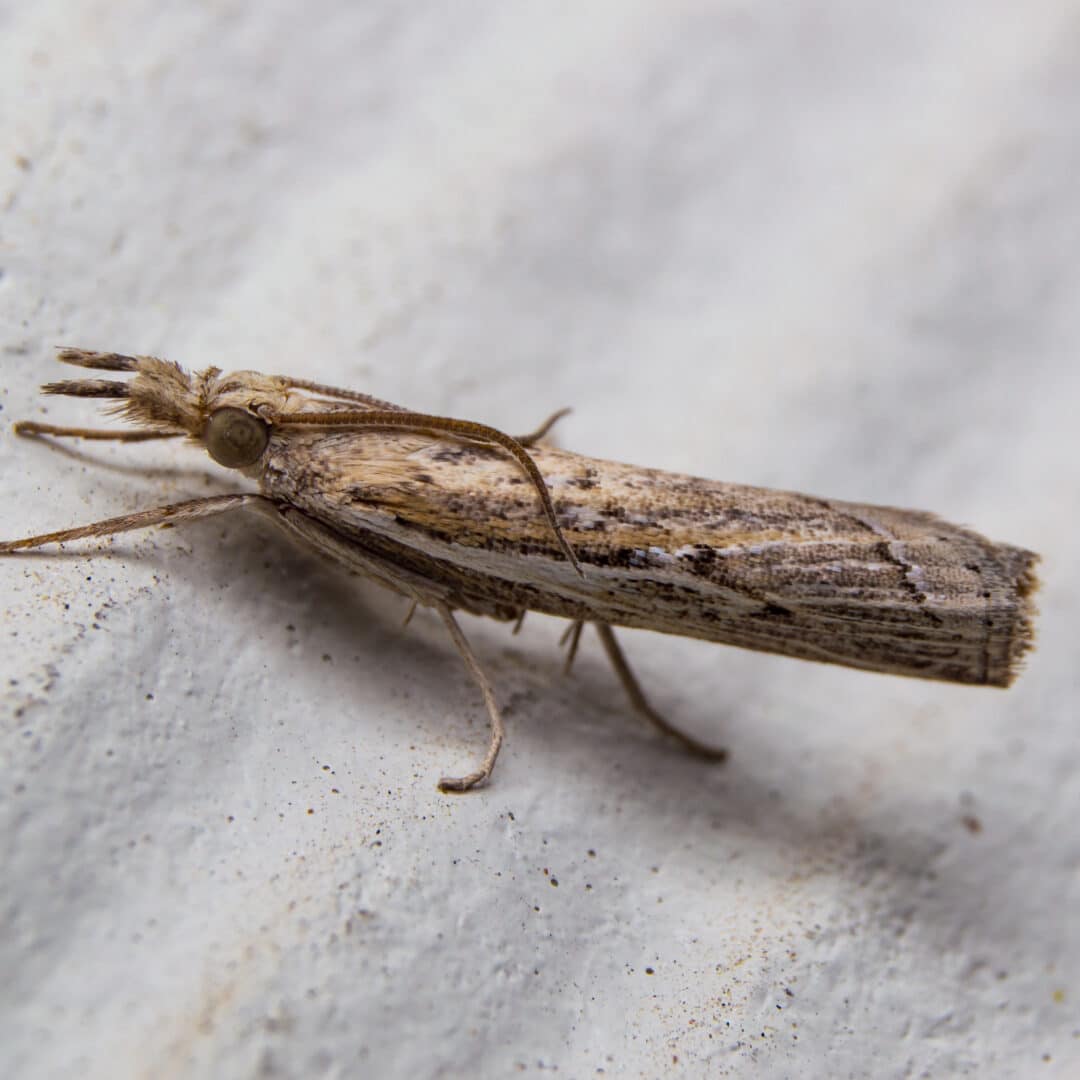Sod Webworms

Type: Moth Larvae
Appearance: Sod webworms are the larvae of small, nondescript moths. The larvae are usually greenish, brown, or gray and have distinctive spots or markings on their bodies.
Location: Found in lawns, sod webworms feed on grass, causing damage that can be detrimental to the appearance and health of your turf.
Sod Webworm Infestation Concerns
Sod webworms are notorious for their feeding habits, which involve chewing off grass blades near the soil surface. This feeding behavior can lead to the development of unsightly brown lawn patches. Severe infestations may result in extensive damage, affecting the overall health and vitality of the turf.
What Causes a Sod Webworm Infestation?
Sod webworm infestations often start with the presence of adult moths in the vicinity. Female moths lay eggs on the grass, and when the eggs hatch, the larvae emerge as sod webworms. Lawns with lush vegetation and frequently frequently irrigated can attract adult moths for egg-laying, increasing the risk of sod webworm problems.
Signs of a Sod Webworm Infestation
- Irregular Brown Patches: Damaged areas of the lawn may exhibit irregular brown patches, especially in sunny or dry conditions.
- Visible Larvae: During the active feeding season, sod webworm larvae may be visible on the grass, particularly near the soil surface.
- Weakened Turf: Infested lawns may display signs of weakened turf, including thinning and reduced grass density.
Green Image Lawn Care Knows All About Sod Webworms
At Green Image Lawn Care, we possess comprehensive expertise to address sod webworm infestations effectively. Our professionals understand the behavior and lifecycle of these pests, enabling us to implement targeted and environmentally friendly control measures. Contact us today at 717-900-8144 for comprehensive solutions tailored to your yard’s specific lawn care needs.
Need Help with Sod Webworms?
Call Green Image Lawn Care today at 717-900-8144 and let's talk about how we can help you with Sod Webworms and other insects.